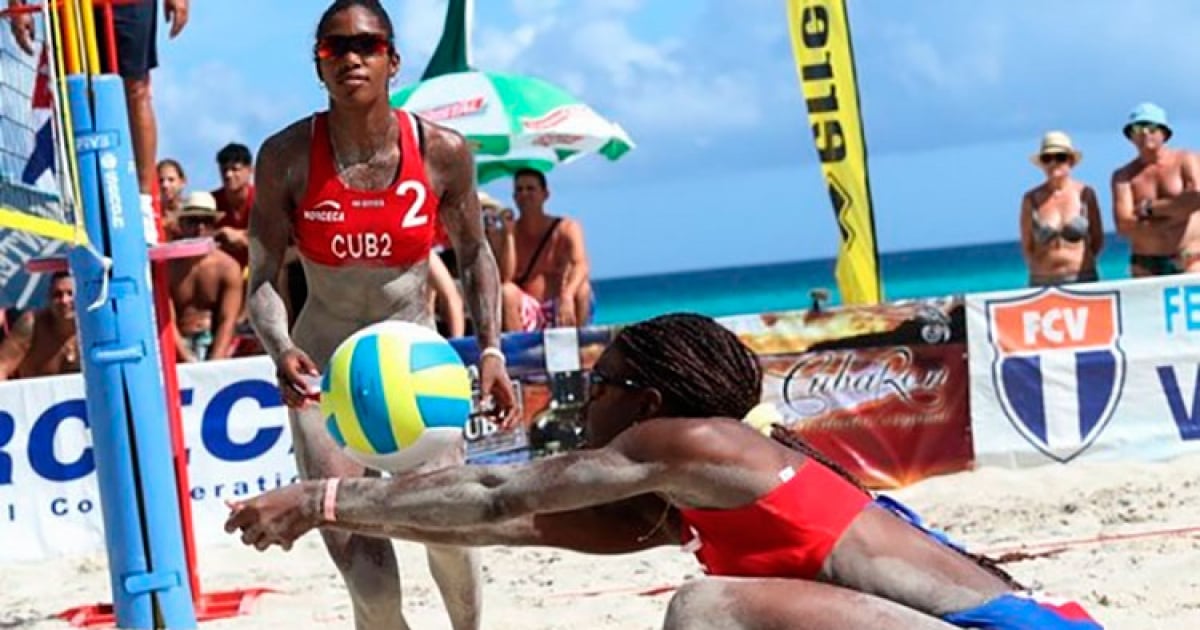Amidst ongoing blackouts, an energy crisis, and widespread shortages, Cuban sports officials have set an ambitious goal to build a beach volleyball stadium in Varadero, one of the country's top tourist destinations. This announcement was made public by the official newspaper Girón and confirmed during the first stop of the North, Central America and Caribbean Volleyball Confederation (Norceca) Beach Volleyball Circuit, currently taking place in Varadero.
Three-time Olympic champion Mireya Luis, now vice president of the Cuban Volleyball Federation and general director of the event, highlighted that the project is backed by the local government, the Ministry of Tourism, and other sports-related entities. "It's a serious goal. We have planned the facility with all necessary requirements," the former player said, referring to the intention to build a permanent structure to replace the current temporary setups used annually for the tournament.
Varadero's Potential as a Sports Destination
The Barceló Solymar Arenas Blancas Hotel has been the usual venue for the event, but its temporary stands only accommodate a small number of spectators. According to Mireya Luis, a stadium with expanded capacity would benefit not just the spectacle itself, but also the athletes' preparation and the prestige of the regional tournament.
Luis also praised the current performance of Cuban pairs, with one being ranked among the top ten in the world. However, she acknowledged the need for stable conditions for beach volleyball to thrive: "We never stop dreaming about the growth of the tournament," expressed the former leader of the "Morenas del Caribe," Olympic champions in Barcelona 1992, Atlanta 1996, and Sydney 2000.
Controversy Over Resource Allocation
While the Norceca circuit plans to make Varadero not only the inaugural stop in 2025 but also the final phase in October, the prospect of building a new stadium during times of scarcity has sparked debate over governmental priorities and the allocation of public resources. This decision stands in stark contrast to the severe issues plaguing the national electrical system, including recurring failures at thermoelectric plants, lack of maintenance, and insufficient investment in critical infrastructure.
On social media, numerous users have criticized the initiative, arguing that government funds and attention should focus on resolving blackouts, improving transportation, supplying hospitals, or ensuring food and medicine availability, rather than constructing a facility for an annual event. For instance, Odalis Altamirano stated, "What we really need is a power plant to serve Matanzas province, which frequently experiences blackouts. But of course, Varadero doesn't feel it, except in rare moments of energy collapse. Keep wasting money and ignore the everyday Cuban who can't even afford a trip to Varadero."
Debate on Economic Priorities
Greisy Rodríguez Delgado sarcastically remarked, "Odalis Altamirano, with what they earn from that stadium, they'll invest in the National Electrical System, you'll see. That's been so effective, look how well-stocked the sales points and service stations are."
The drastic decline in housing construction in Cuba is a clear indicator of the economic and social crisis the country is facing. In 2024, fewer homes were built than during the worst years of the Special Period, highlighting the state's continuous inability to address one of the population's most basic needs. This data was unveiled by Cuban economist Pedro Monreal in an analysis shared on social media, based on the official report titled "Construction in Cuba. Selected Indicators. January-December 2024. May 2025 Edition," issued by the National Office of Statistics and Information (ONEI).
According to official figures, investments in business services, real estate activities, and rentals in 2024 totaled 24,907 million Cuban pesos (CUP), making it the country's primary capital expenditure destination. Additionally, 11,936.5 million CUP were directed towards hotels and restaurants, amounting to over 36,800 million pesos invested in activities closely tied to tourism.
These figures amplify the debate around the regime's persistent prioritization of tourism, despite the sector's prolonged stagnation and the severe shortages facing the population in fundamental areas such as public health and food production. In 2024, official data on investment during the first half of the year reignited the discussion about resource distribution on the island, particularly the regime's insistence on investing in tourism at the expense of crucial sectors like health and social assistance. According to the ONEI report, from January to June 2024, the regime allocated nearly 40% of its investments to tourism-related activities, while investment in Health and Social Assistance is 14 times less, a fact severely criticized by economic experts, such as Cuban economist Pedro Monreal.
FAQs on Cuba's Energy and Infrastructure Challenges
Why is the construction of a beach volleyball stadium in Varadero controversial?
The controversy stems from the prioritization of this project amidst severe public resource shortages, especially given Cuba's ongoing energy crisis and widespread shortages in essential services.
What impact could the stadium have on Cuba's tourism sector?
A new stadium could enhance Varadero's appeal as a sports destination, potentially drawing more international attention and visitors, but critics argue this should not overshadow pressing domestic needs.
What are the criticisms regarding Cuba's investment in tourism?
Critics argue that excessive investment in tourism detracts from addressing fundamental issues such as healthcare, social services, and energy infrastructure, which are crucial for the Cuban population's well-being.
